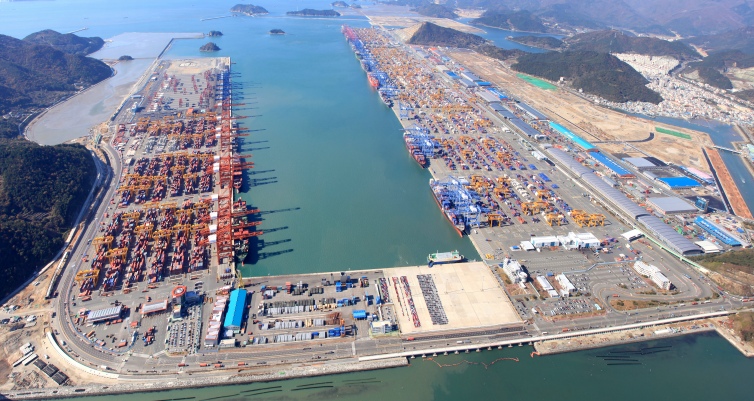
South Korea’s Ministry of Ocean and Fisheries and the Busan Port Authority (BPA) have unveiled plans to turn Busan Port into a major transshipment hub expected to handle 13 million TEU of transshipment cargo by 2020, ranking it number two in the world, just behind the Port of Singapore.
The first step is to integrate container handling activities currently undertaken at North Port and New Port into a single New Port location. This will also include the creation of eight new berths at New Port by 2020 – these will add a further 6.21 million TEU capacity. Added to this, a feasibility study will investigate further expansion to the western container terminal at New Port.
In addition, a feeder terminal for intra-Asian carriers will be created to serve the feeder network within the port.
Meeting the demands for ever-growing container ships, the current program of dredging to a depth of 17 meters will be completed ahead of schedule in March 2017. Todo Island, currently situated in the port entrance, will be removed by 2019 and the entrance itself will be expanded by the end of 2018.
For the efficient transfer of transshipment containers, the current multi-purpose terminal sited between the north and south container terminals will be replaced by a yard tractor shuttle road and storage area.
The multi-purpose terminal will be relocated elsewhere. A new port-wide ITT platform will control all container movements.
To generate economies of scale and to facilitate these new arrangements, the four existing terminal operators at North Terminal will form a new unified joint venture company with BPA taking a shareholding.
In recent years transshipment cargo at Busan has grown by 10% (average) year-on-year while local cargo has increased by 4.2%. In 2014, transshipment activities overtook local cargo operations for the first time in the port’s history with transshipment accounting for 50.5% (9.43 million TEU) up from 31.7% in 2000.
(From: World Maritime News)